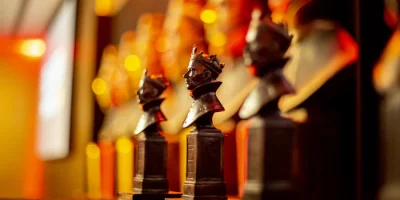
The top places to visit for London arts and culture
We take a look at the top cultural hotspots in London that no trip is complete without.
Wherever you walk in London, you’ll be stepping through history. A global hotspot of tourism, trade and travel throughout centuries past, London has become a melting pot of cultures and customs. With thousands of years of history bursting at the seams, we take a look at the top cultural hotspots in London that no trip is complete without. From theatrical destinations like the National Theatre and the Barbican to political locations you’ll have seen on TV, you’ll want to visit everywhere on this list.

Barbican
Even though the Barbican only opened in 1982, it’s regarded as a leading venue for a variety of London arts. Throughout the year, the Barbican showcases world-class dance programming, as well as cinema, music concerts, theatre and visual arts.
What the Barbican brings in entertainment, some say it lacks in its appearance. Originally labelled a “concrete pyramid” in London due to its looks when it first opened, the Barbican space was later renovated with statues and decorations for aesthetic purposes.

Shakespeare’s Globe
If you want to soak up British culture, a trip to Shakespeare’s Globe is a must. Shakespeare’s Globe is a reconstruction of the Bard’s Globe Theatre, originally built in 1559. After being built and demolished twice, the current Shakespeare’s Globe has been open since 1997, thanks to reconstruction efforts led by British actor Sam Wanamaker.
As you walk around the theatre, you’ll be able to feel the true essence of the Elizabethan era come to life. Adorned on the walls are displays full of information about the British writer, as well as the state of theatre during the 16th century.

Royal Court
Located in Sloane Square, the Royal Court is the home of experimental drama and avant-garde theatre. Visit the Royal Court to see the latest, greatest playwrights present their new works, and who knows, you may even see the next big hit.

Royal Albert Hall
Named after Prince Albert, the Victorian concert hall is a highly esteemed venue to perform at. Every summer, the BBC Proms take place in the Hall, allowing audiences to listen to iconic concertos and music, as well as concerts inspired by pop culture. The Royal Albert Hall is a feat of structural engineering too; its glass dome stretches 20,000 square feet and is the largest of its kind worldwide.
National Theatre
Even though initial talks for the National Theatre were taking place from as early as 1848, it took over a century for the Southbank venue to open. The National Theatre company formed in 1963 putting on shows at the Old Vic, notably Hamlet in 1963 under the Artistic Director Laurence Olivier. The National Theatre building opened in 1977 and has three spaces: the Olivier, the Lyttelton and the Dorfman.
The National Theatre has been the home of award-winning productions including The Curious Incident of the Dog in the Night-Time, The Lehman Trilogy, War Horse and The History Boys.
Wilton’s Music Hall
Built in 1743, Wilton’s Music Hall is the world’s oldest surviving Music Hall, with a year round programme that celebrates traditional performance styles. The current Wilton’s Music Hall that stands today reopened in the 1990s with Fiona Shaw in T. S. Eliot’s The Wasteland. This East End venue may not be home to the glitziest shows, but if you’re looking for an intimate production that feels historical, Wilton’s is the place for you.
Young Vic
Did you know that the Young Vic was built on the site of a bakery? No wonder there’s sweet productions to watch all year around then. The central London venue opened in 1970, with the Young Vic becoming an independent body in 1974. Originally, it was meant to be a London theatre for just five years, but is now a permanent fixture in the world of off-West End theatre. Shows often transfer to the West End too, including Death of a Salesman.
Old Vic
Walk further down The Cut and you’ll be at the Old Vic. The home of the first National Theatre company, the Old Vic is a great place to spot stars of stage and screen. Blending old-school theatre styles with modern, edgier alternatives, the Old Vic has earned its unofficial stripes as one of the coolest venues in the city.
Originally published on









